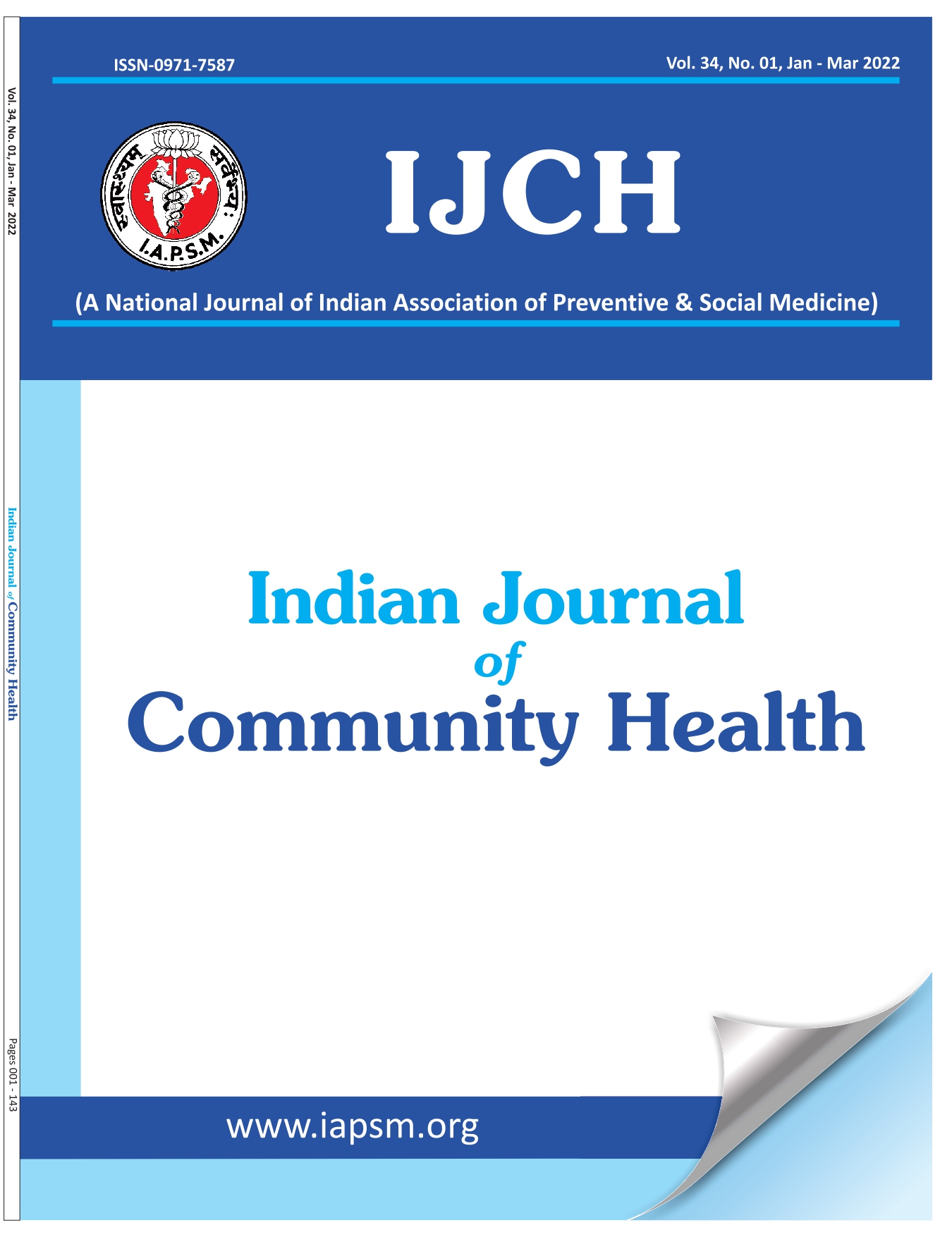Deteriorating human microbiome – An emerging global health challenge
DOI:
https://doi.org/10.47203/IJCH.2021.v33i03.001Keywords:
.Abstract
The study of human microbiome and its relationship with health and disease is one of the most exciting areas of research in health all over the world, especially after the failure of human genome project to deliver its expected results.
Our body is composed of 30 trillion human cells. But it is host to close to 100 trillion bacterial and fungal cells. 70 – 90% of all cells in our body are non human. They reside on every inch of our skin, in our nose, mouth, ears, in our oesophagus, stomach and most abundantly in our gut. They are not a random phenomenon but have co-evolved with us humans over millions of years. Collectively these bacteria weigh about 3 pounds. The more we read about research on microbiome or microbiota, the name given to all these friendly symbiotic partners, the more we get interested in their role in health and disease.
According to Martin J. Blaser, director of the Human Microbiome Program, who has also served as the president of Infectious Disease Society of America, in his best seller ‘Missing Microbes' (1), “It is our microbiome that keeps us healthy and parts of it are disappearing. The reason for this disaster is all around us – overuse of antibiotics in humans and animals, caesarean sections and widespread use of sanitizers and antiseptics, to name just a few.”
Downloads
References
Blaser MJ. Missing microbes: how the overuse of antibiotics is fuellingourmodernplagues. NewYork:Picador; 2015.
Valdes AM, Walter J, Segal E, Spector TD. Role of the gut microbiota innutritionandhealth[Internet].TheBMJ.BritishMedicalJournalPublishingGroup;2018.Availablefrom:https://www.bmj.com/content/361/bmj.k2179(Lastaccessedon25.09.2021)
Finlay BB, Arrieta M-C. Let them eat dirt: saving your child from anoversanitizedworld. London:WindmillBooks;2017.
Van Houten CB, Cohen A, et al. Antibiotic misuse in respiratory tractinfectionsinchildrenandadults-aprospective,multicentrestudy(TAILOREDTreatment).EurJClinMicrobiolInfectDis.2019Mar;38(3):505-514.
Francino MP. Antibiotics and the Human Gut Microbiome: DysbiosesandAccumulationofResistances.FrontMicrobiol.2016;12(6):1543.
ENDERS GIULIA. Gut: the inside story of our bodys most underratedorgan;trans. by davidshaw.
Caesareansectionusehasalmostdoubledgloballysince2000[Internet].ScienceDaily.ScienceDaily;2018.Availablefrom:https://www.sciencedaily.com/releases/2018/10/ 181011190654.htm(Lastaccessedon25.09.2021)
Ejtahed HS, Hasani-Ranjbar S, Siadat SD, Larijani B. The most importantchallenges ahead of microbiome pattern in the post era of the COVID-19pandemic. JDiabetesMetabDisord.2020;19(2):1-3
Candon S, Perez-Arroyo A, Marquet C, Valette F, Foray A-P, Pelletier B,et al. Antibiotics in Early Life Alter the Gut Microbiome and IncreaseDisease Incidence in a Spontaneous Mouse Model of AutoimmuneInsulin-DependentDiabetes.PlosOne.2015;10(5).
ProalAD,AlbertPJ,MarshallTG.Thehumanmicrobiomeandautoimmunity.CurrentOpinioninRheumatology.2013;25(2):234–40.
CollinsSM,BercikP.Therelationshipbetweenintestinalmicrobiotaandthe central nervous system in normal gastrointestinal function anddisease.Gastroenterology. 2009;136(6):2003-14.
Rajagopala SV, Vashee S, Oldfield LM, Suzuki Y, Venter JC, Telenti A,NelsonKE.TheHumanMicrobiomeandCancer.CancerPrevRes(Phila).2017;10(4):226-234
Trøseid M, Andersen GØ, Broch K, Hov JR. The gut microbiome incoronary artery disease and heart failure: Current knowledge andfuturedirections.EBioMedicine.2020;52:102649.
van den Elsen LWJ, Garssen J, Burcelin R and Verhasselt V. Shaping theGut Microbiota by Breastfeeding: The Gateway to Allergy Prevention?Front.Pediatr. 2019;7:47.doi: 10.3389/fped.2019.00047
School of Medicine The Moore Institute [Internet]. OHSU. Availablefrom: https://www.ohsu.edu/school-of-medicine/moore-institute/breastfeeding-and-microbiome(Lastaccessedon25.09.2021)
Downloads
Published
How to Cite
License
Copyright (c) 2021 Indian Journal of Community Health

This work is licensed under a Creative Commons Attribution-NonCommercial-NoDerivatives 4.0 International License.





